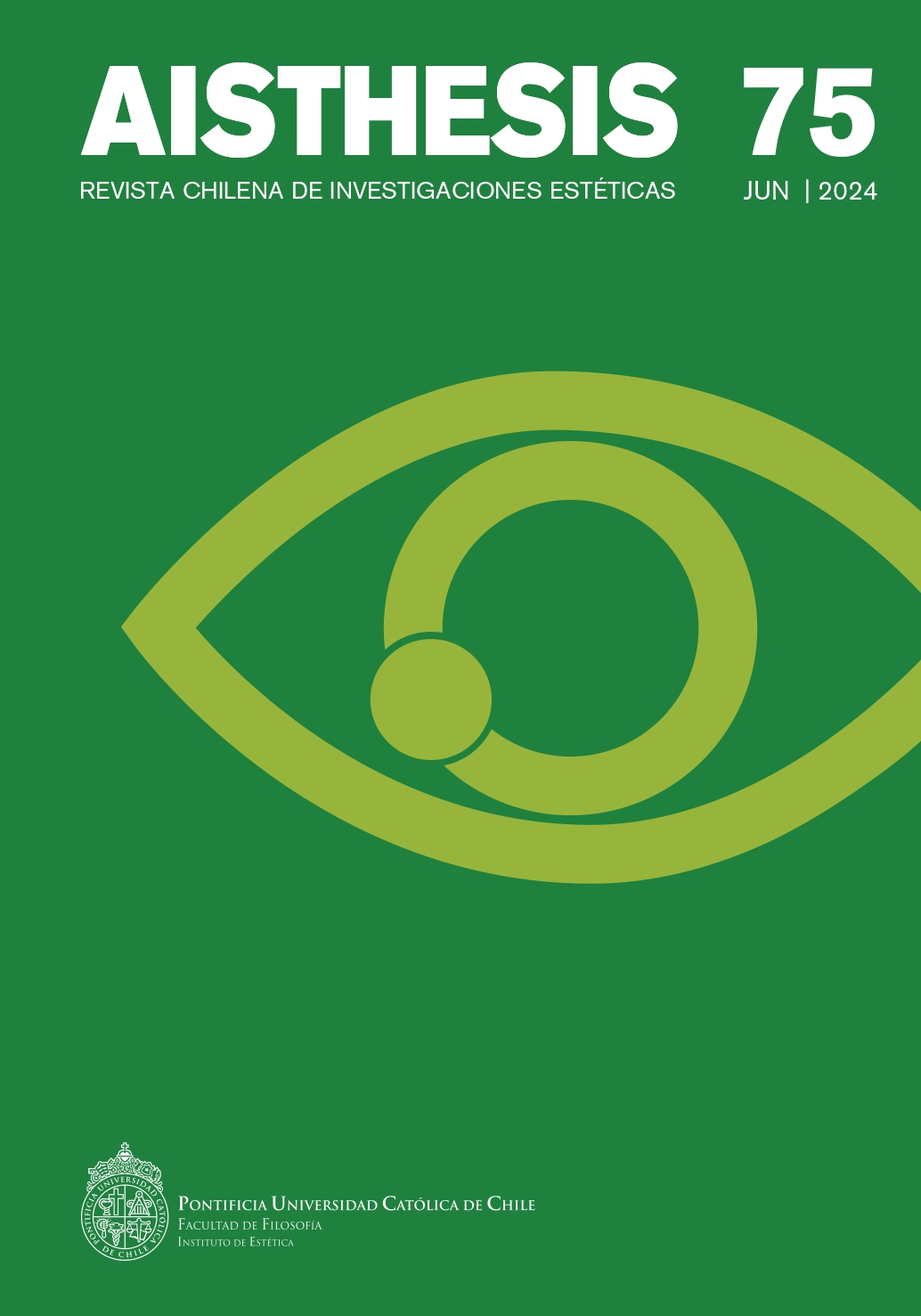The Impossibility of the Portrait of the Indian and the Imposition of the Human Type as a Means of Representation
Main Article Content
Abstract
Portrait and type are two opposite ways of representing the human and obey to completely diverse logics. The portrait is an effort to highlight the most distinctive features of an individual, while the type, on the contrary, takes up what is common to various individuals, thus establishing a logic of de-individualization. In the New World, the type was the privileged representation of the Indian, since the portrait was exclusive to the social layers of European background. Afterwards, in the age of photography, the Indian will continue being shown as an indigenous type, either on postcards or in scientific publications. This paper is a reflection on the aesthetical-political logics underlying the establishment of the type as a privileged way of representing the Indian. Finally, we are analyzing the indigenous type in Martin Chambi’s work, photographer who first attempted to disrupt that category.
Downloads
Article Details

This work is licensed under a Creative Commons Attribution-NonCommercial-ShareAlike 4.0 International License.
All contents of this electronic edition are distributed under the Creative Commons license of "Attribución-shareAlike 4.0 Internacional" (CC-BY-SA). Any total or partial reproduction of the material must mention its origin.
The rights of academic works published in this publication belong to their authors., who grant to AISTHESIS: Revista Chilena de Investigaciones Estéticas the license for its use. The management of the permits and the authorization of the publication of the images (or of any material) that contains copyright and its consequent rights of reproduction in this publication is the sole responsibility of the authors of the articles
References
Referencias
Báez, C. y P. Mason. Zoológicos humanos. Fotografías de fueguinos y mapuche en el Jardín de aclimatación de Paris, siglo XIX. Pehuén, 2006.
Bancel, N., G. Boëtsch, E. Déroo, S. Lemaire y P. Blanchard. Zoos humains. La Découverte, 2004.
Benjamin, Walter. «Tesis sobre filosofía de la historia». Iluminaciones I. Taurus, 1973.
––. La obra de arte en la época de su reproducibilidad técnica. Itaca, 2003.
––. «El narrador ». Obras, libro II, vol. 2. Abada, 2007.
––. «Experiencia y pobreza». Obras, libro II, vol. 1. Abada, 2007.
––. «Pequeña historia de la fotografía». Sobre la fotografía. Pre-Textos, 2013.
––. «El París del Segundo Imperio en Baudelaire». Baudelaire. Abada, 2014.
Brocchini, Ilaria. Trace et disparition. À partir de l’oeuvre de Walter Benjamin. L’Harmattan, 2006.
Chambi, Martín. «Grandeza del viejo Cuzco a través de la fotografía». Las Últimas Noticias. Santiago de Chile, 16 de marzo de 1936.
––. Hoy. Año V. Santiago de Chile, 4 de marzo de 1936.
Damish, Hubert. L’origine de la perspective. Flammarion, 1993.
Daston, L. y P. Galison. Objectivity. Zone Books, 2010.
Déotte, Jean-Louis. «Du déjà vu». Qu-est ce qu’un appareil? Benjamin, Lyotard, Rancière. 2007.
––. «Ce que je dois à Foucault». Revue Appareil , nº 4, 2010, recuperado el 1º de octubre de 2016. http://appareil.revues.org/913. DOI : 10.4000/appareil.913
––. «Trace et disparition à partir de l’œuvre de W. Benjamin d’Ilaria Brocchini». Revue Appareil, 2008, recuperado el 12 de septiembre de 2017. http://appareil.revues.org/640
––. «Le 6 juin 1944. La ligne d'horizon». Revue Appareil, 2013, recuperado el 30 de septiembre de 2016. http://appareil.revues.org/1536
Derrida, Jacques. Mal d’archive. Galilée, 1995.
Desportes, Marc. Paysages en mouvement. Perception de l’espace et transports (XVIII-XX siècle). Gallimard, 2005.
Didi-Huberman, Georges. Atlas ¿cómo llevar el mundo a cuestas? Museo Reina Sofía Catálogo TF editores, 2010.
Foucault, Michel. Las palabras y las cosas. Una arqueología de las ciencias humanas. Siglo XXI, 2010.
Freund, Gisèle. La fotografía como documento social. Gustavo Gili, 1983.
Garay, A. Martín Chambi, por sí mismo. Universidad de Navarra, 2010.
Giacomoni, Paola. «Wilhelm von Humboldt et l’anthropologie comparée». Revue germanique internationale, nº 10, 2009. http://journals.openedition.org/rgi/319; Doi: https://doi.org/10.4000/rgi.319
Grüner, Eduardo. El fin de las pequeñas historias. De los estudios culturales al retorno (imposible) de lo trágico., 2002.
Huayhuaca, J. C. Martín Chambi fotógrafo. Tomo 52. Colección trabajos del IFEA, 1990.
Humboldt, Alexander. «Preparativos, instrumentos». Libro Primero, capítulo primero. Viaje a las regiones equinocciales del nuevo continente. Casa Rosa, 1826.
Kay, Ronald. «La reproducción del Nuevo Mundo». Del espacio de acá. Metales pesados, 2005.
Mege Rosso, P., M. Alvarado y C. Báez. Mapuche. Fotografías siglos xix y xx: Construcción y montaje de un imaginario. Pehuén, 2001.
Pereira-Salas, Eugenio. «Juan Mauricio Rugendas (1802-1858) Pintor de las Américas». Album de trajes chilenos. Editorial Universitaria, 1970.
Pommier, Édouard. Théories du portrait. De la Renaissance aux Lumières. Gallimard, 1998.
Rojas-Mix, Miguel. América imaginaria. Pehuén, 2013.
Rugendas, Moritz. Voyage pittoresque dans le Brésil. Engelmann et Cª, 1853.
Sánchez, Cecilia. El conflicto entre la letra y la escritura: legalidades/contralegalidades de la comunidad de la letra en Hispanoamérica y en América Latina. Fondo de Cultura Económica, 2013.
Simondon, Gilbert. «Individuation et Invention». En L’individuation à la lumière des notions de forme et d’information. Millon, 2013.
TLFI. Tipo. Centre national de ressources textuelles et lexicales. https://www.cnrtl.fr/definition/type Recuperado el 25 de agosto de 2017.
––. Gráfico. Centre nationale des ressources textuelles et Lexicales. http://www.cnrtl.fr/definition/graphique Recuperado el 15 de septiembre de 2017.
